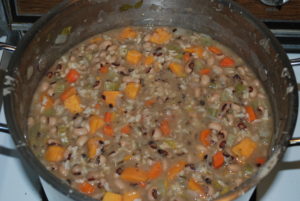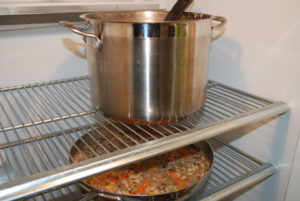The rate of cancer incidence has increased greatly in many countries and is expected to continue to increase, particularly in association with the aging of the population. Cancer is more often a diagnosis after age 65. The rate of thyroid cancer in particular has increased greatly in women. The rate of developing some type of cancer during one’s lifetime is expected to reach 1 in 2 men and 1 in 3 women by the yea 2050, (MedScape) – or a more general 1 in 2 people, (medicalnewstoday) – those are not good odds.
It is common during youth to feel secure about health but our bodies tend to run out of stored nutrients as we age and metabolic pathways that we depend on to rebuild muscle and remove toxins or defective cells can become less effective. A healthy immune system also protects us from our own body’s normal rebuilding/regrowth of new cells. Defective ones are typically removed from growth areas in bone marrow before they enter circulation. Cancer cells are also removed on a regular basis when our immune systems are healthy.
Magnesium deficiency is a topic I keep stressing because the immune cells require magnesium in order to perform the apoptosis, killing, of defective or precancerous cells. The body’s defense systems are well developed but need fuel on a daily basis in order to be able to function as nature designed. While immune cells need magnesium in order to purposefully kill defective cells by apoptosis ( an enzyme is inserted into the cell which causes it to die and then the immune cell engulfs the debris and removes it for detoxification and excretion from the body), a cell that is deficient in magnesium or calcium may also undergo apoptosis due to the deficiency. (magnesium and apoptosis)
Too little Nrf2 may reduce immune system and antioxidant health but too much can be a problem in cancer cells that grow too rapidly. (Nrf2 overproduction and cancer)
Another person writing about the recent research in the area of Nrf2 shares more information about foods that help promote Nrf2 and how nature may have built in a mechanism within some foods that help prevent an over production of the important protein (Nrf2). See: “Activate Nrf2, then optimize: Brussel Sprouts.” – Bill Lagokos (patreon) /Spoiler, if not a fan of Brussel Sprouts the healthy phytonutrient that is discussed is also found in cruciferous vegetables including cabbage, cauliflower, broccoli, kohlrabi, and kale.
I personally am more sensitive to the group, especially if served raw or in larger quantities, but find steamed kale everyday tolerable to my digestive system. The bloating effect may be due to our good guy bacteria enjoying the fiber rich vegetables so much they produce the excess gas – but it can be a sign of healthy bacteria in our digestive tract. Irritable Bowel Syndrome can be affected by any food that causes bloating effects possibly due to TRP channel’s being activated by increased pressure. People with a history of IBS and other chronic pain syndromes may be suffereing from an underlying issue with overactive TRP ion channels. IBS and TRP channels are discussed on this site in a previous post. TRP channels are discussed in more detail with links on another website: Chronic Itch, migraines, IBS and stress; – that is one part frm a longer series: Relaxation and Stress, which is continued in: Preeclampsia & TRP Channels.
Disclaimer: Opinions are my own and the information is provided for educational purposes within the guidelines of fair use. While I am a Registered Dietitian this information is not intended to provide individual health guidance. Please see a health professional for individual health care purposes.



